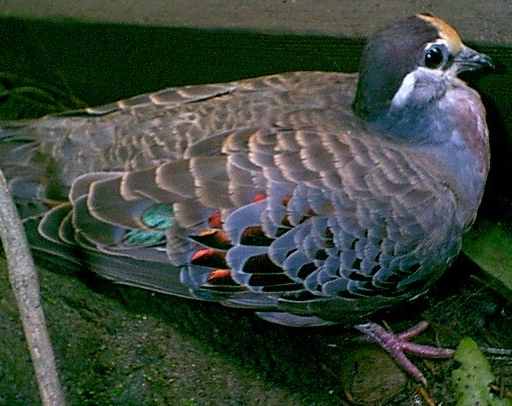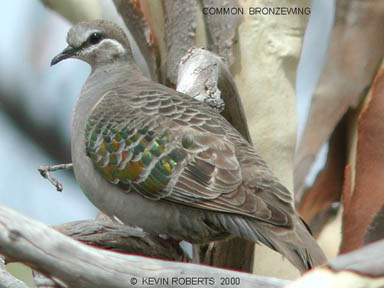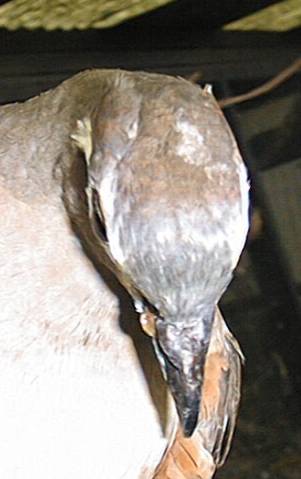
Female & young
Common Bronzewing
Phaps chalcoptera
AKA: Bronzewing Pigeon, Forest Bronzewing

Female & young

Male


Female
ŠJohn Pire
Distribution: Found in a great variety of habitats of Australia. Prefers the open woodlands & savannas with dry scrubland, heathy vegetation having permanent water access to the wet/humid rainforests & treeless plains. Has adapted well to the cultivated areas where trees & shrubs still remain close.
Three races recognized: P. c. chalcoptera (Latham 1790); P. c. murchisoni (Mathews 1912); P. c. consobrina (Mathews 1912).
Description: Length 33 cm. Forehead bright gold buff to rufous buff bordered at back by a purplish band across the crown & continuing on sides of head behind the eye. Has a dark stripe from bill to eye & a creamy white stripe below the eye stripe & continuing below & past the eye. Sides of neck bluish grey; throat whitish. Front of neck & breast deep mauve pink shading to salmon pink to brownish grey on ventral area & undertail coverts. Upper parts olive brown clearly edged buff. Back to upper tail covers earth brown. Wing shields have iridescent patches of metallic green, golden, bronze or purplish, depending on the reflection of the light on these areas. Female similar to male being a more brownish; has a grey forehead & brownish sides of neck. Juvenile a pale versions of female; both sexes lack the wing shield iridescence of adult & both sexes have a buff gold forehead.
Nesting: Clutch is two white eggs; incubation is 14-16 days; juveniles tend to remain in the nest upwards of three weeks, although they are capable of flight at about two weeks.
NOTES: The sex of the juveniles can be determined before the adult plumage. Several feathers in the forehead area can be plucked; if they grow back in grey the youngster is a female, if the feathers grown back in the golden buff then it is a male.
Pictures showing natural forehead coloration to determine the
sex of the juvenile.
![]()